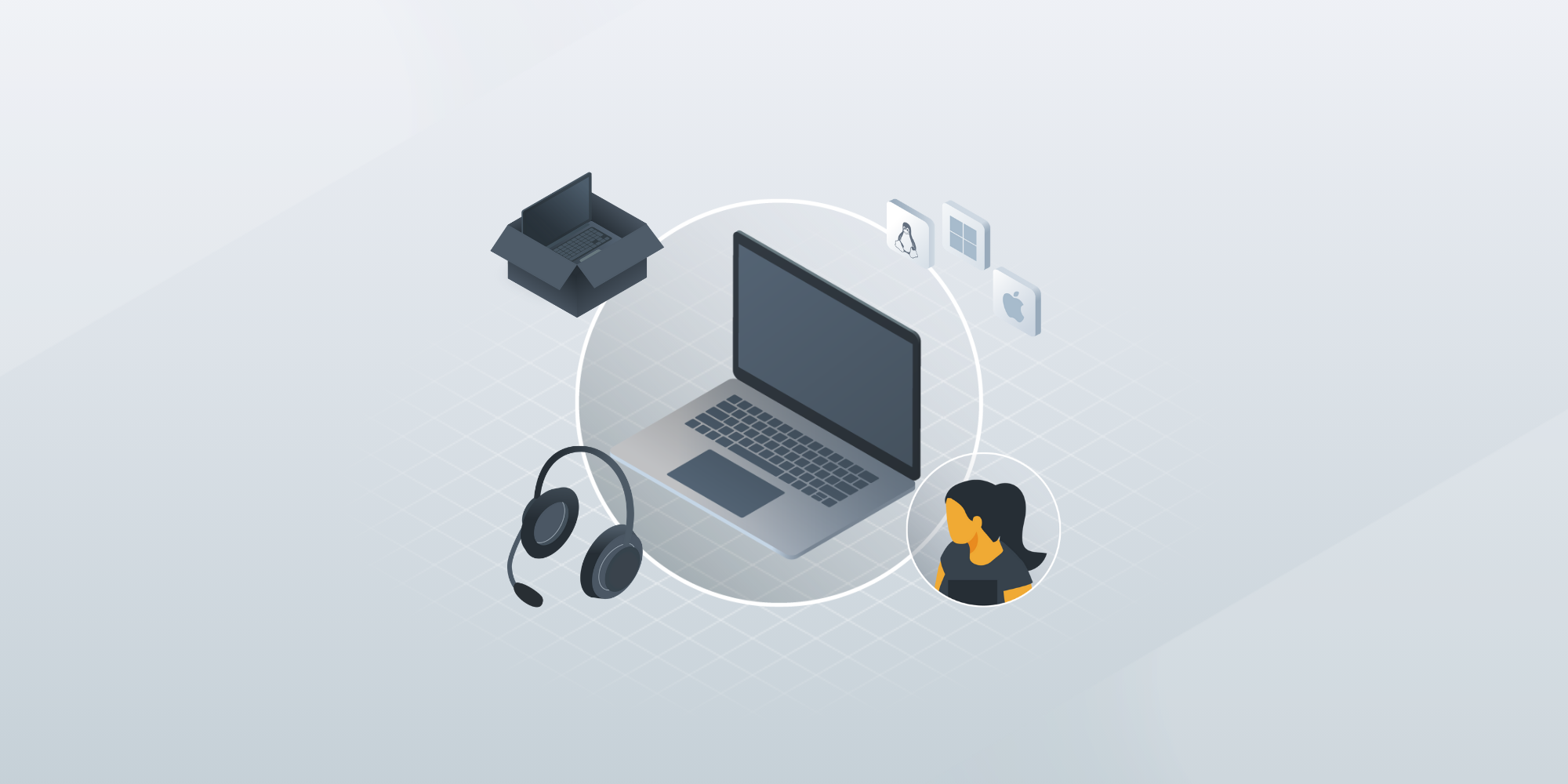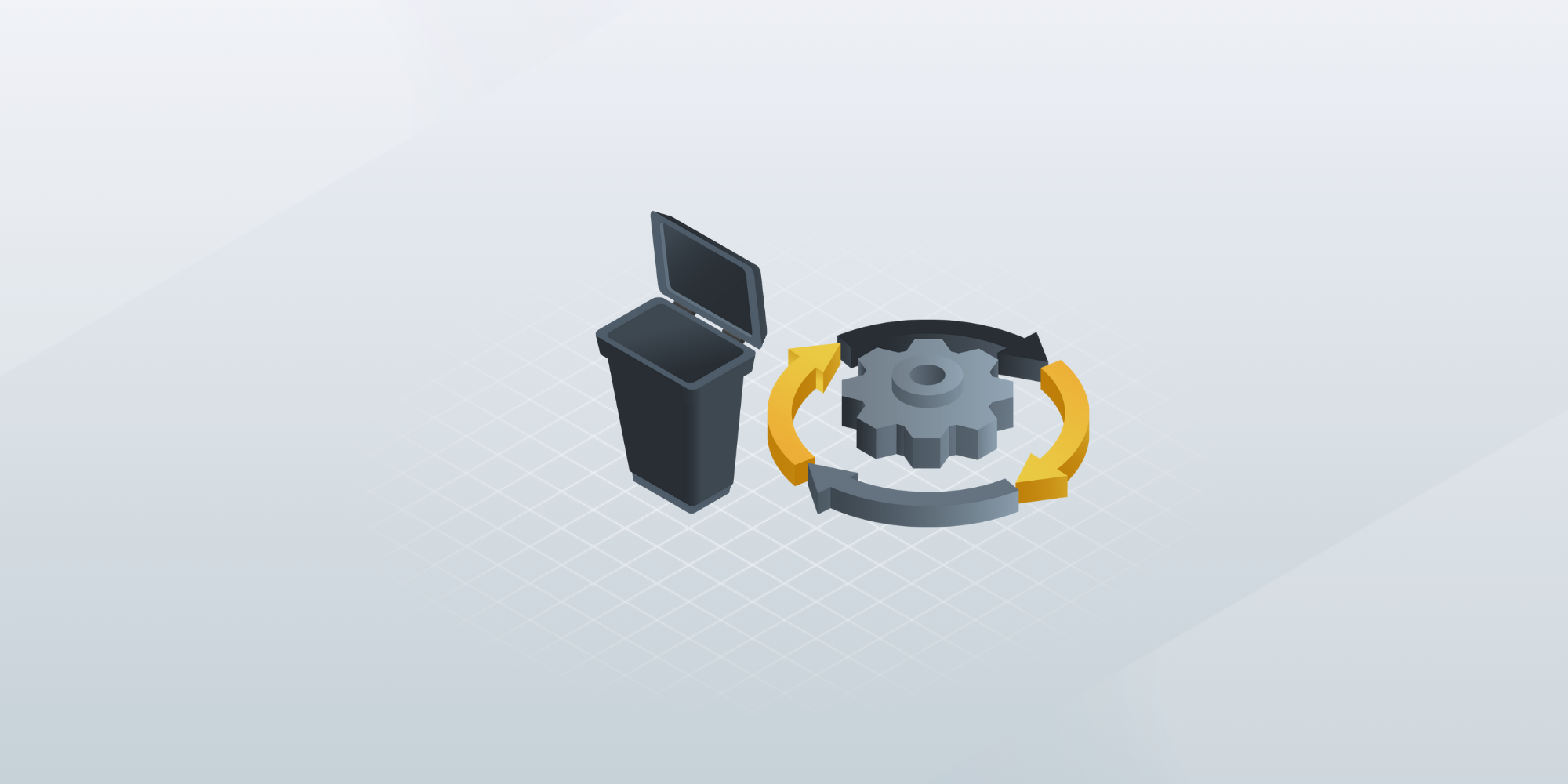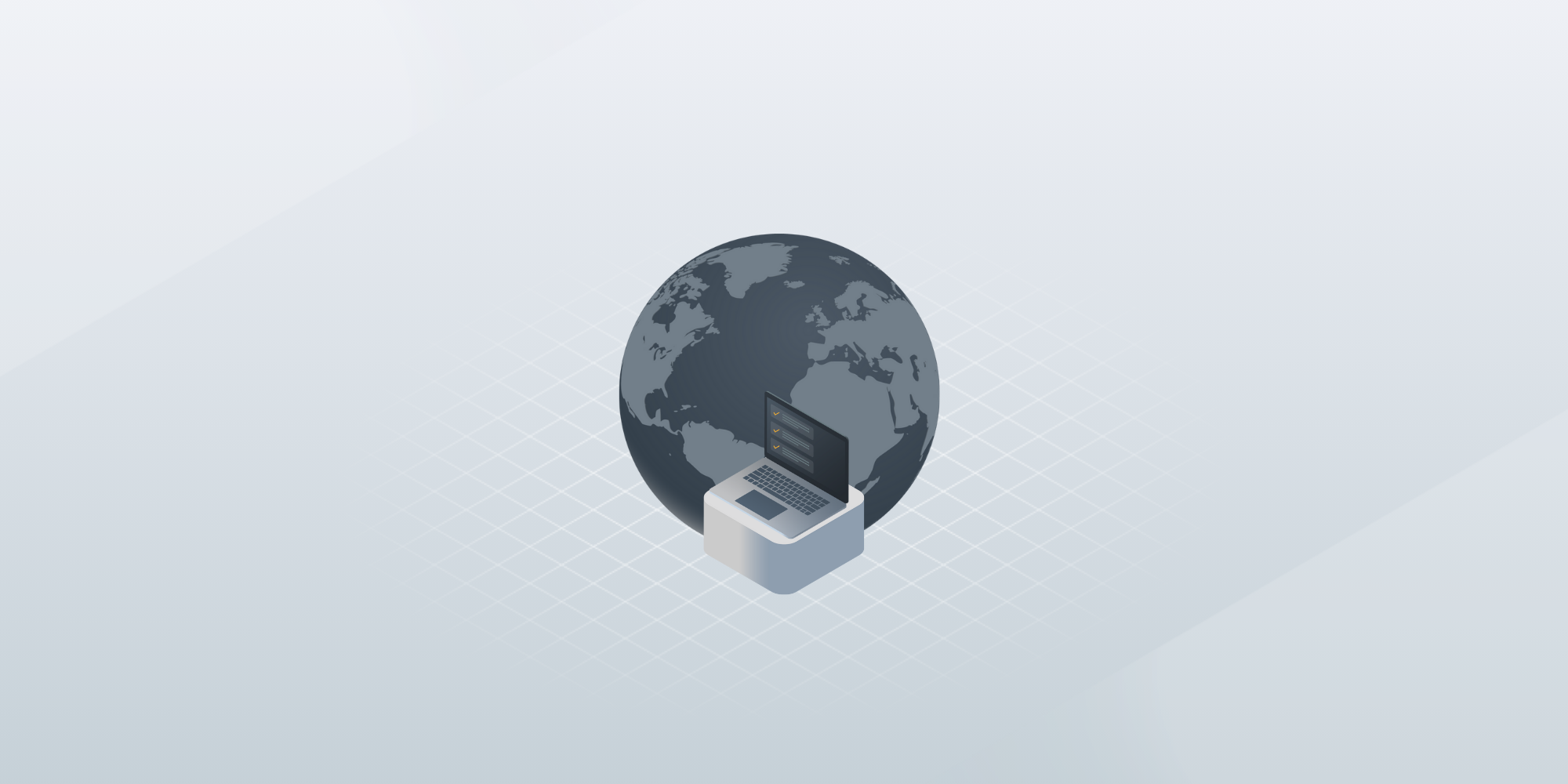What is Device-as-a-Service (DaaS)? Essential tips and examples
 GroWrk Team
GroWrk Team
Device-as-a-Service (DaaS) turns your tech expenses into predictable monthly payments by bundling hardware, software, and management services. The industry is growing at an astronomical rate. Its estimated value was USD 34.65 billion in 2024 and is projected to grow to USD 226.73 billion by 2032. This article explains how DaaS works and highlights its top benefits for businesses.
Key takeaways
-
Device-as-a-Service (DaaS) provides a subscription-based model that converts capital expenditures into predictable monthly operational expenses, reducing business financial burdens.
-
The adoption of DaaS is accelerating due to its cost efficiency, simplified management, and enhanced employee productivity, particularly in response to the growing remote work trend.
-
Choosing the right DaaS provider involves assessing business needs, evaluating security features, and ensuring robust support and maintenance options to maximize implementation benefits.
What is Daas?

Device-as-a-Service is a subscription-based model that bundles hardware, software, and management services into a single package. This allows companies to pay a fixed monthly fee instead of making significant upfront investments.
This service model simplifies device management by providing continuous monitoring and adjustments to automatic device management performance throughout the subscription model period, showcasing various service models.
The DaaS lifecycle
Discovering user needs
The first step begins with assessing organizational requirements. This means identifying the right devices, configurations, and software to support employee roles and business objectives. A tailored approach ensures that every team member has the tools to excel.
Configuring devices
Devices are pre-configured with operating systems, applications, and security settings, often using zero-touch deployment methods. This ensures consistency and allows employees to start working right out of the box.
Deploying devices
DaaS providers handle logistics to deliver devices quickly, whether locally or globally. This minimizes delays and ensures employees have the necessary equipment, no matter where they are.
Optimizing performance
Once devices are in use, continuous monitoring, updates, and proactive maintenance ensures that devices remain efficient and secure. Predictive analytics help identify and resolve issues before they affect productivity.
Responsibly disposing of devices
At the end of their lifecycle, devices are retrieved, securely wiped, and refurbished or recycled. This ensures data security and supports sustainability goals, preparing businesses for their next tech upgrade.
DaaS supply chain
Device-as-a-Service streamlines IT management by integrating key components into a comprehensive solution. It begins with device fulfillment, ensuring businesses receive the hardware they need, customized to meet specific requirements.
Ongoing services are a vital part of DaaS, so devices stay up-to-date and well-maintained. These services include regular updates, troubleshooting, and technical support to address issues quickly. By minimizing downtime, they help employees work efficiently without disruptions.
At the end of a device’s lifecycle, responsible recovery takes over. This includes secure data wiping, refurbishment, or recycling, promoting sustainability while safeguarding sensitive information.
DaaS providers manage the entire process, from acquisition and deployment to maintenance and disposal. Their end-to-end support eliminates the burden of IT management, allowing organizations to focus on their core operations with confidence.
Devices-as-a-Service vs. Desktop-as-a-Service
While Device-as-a-Service (DaaS) and Desktop-as-a-Service (DaaS) may seem similar, they each offer different tech solutions.
Devices-as-a-Service provides hardware like laptops and desktops on a subscription. This helps businesses manage hardware efficiently and keep costs low. It also reduces IT workload and boosts security and productivity.
Desktop-as-a-Service offers virtual desktops via the cloud. It allows access from any device, supporting remote work and enhancing security. This is ideal for companies with remote teams or strict data security needs.
In short, Devices-as-a-Service is great for hardware management, while Desktop-as-a-Service suits those needing flexible, secure virtual desktops. The choice depends on whether a company needs physical device management or virtual workspace access.
Key benefits of Device-as-a-Service
%20with%20other%20service%20models.png?width=600&height=300&name=04%20Comparing%20PCaaS%20(PC%20as%20a%20Service)%20with%20other%20service%20models.png)
Device-as-a-Service offers numerous advantages that make it an attractive option for businesses. Key benefits include:
-
Cost efficiency
-
Simplified management
-
Enhanced employee productivity
-
Comprehensive support services
These benefits collectively contribute to a more streamlined and effective approach to device management, allowing organizations to focus on their core operations while enjoying the latest technology and support on mobile devices.
Cost efficiency
One of the main perks of DaaS is cutting down on operational costs. By turning capital expenses (CapEx) into operational expenses (OpEx), businesses can dodge hefty upfront costs and enjoy predictable monthly bills. This financial flexibility lets companies use their resources more wisely and tweak their device needs as their workforce changes.
Furthermore, DaaS offers a comprehensive solution that includes core devices and essential management services at an affordable rate. Minimizing downtime and reducing the need for significant upfront investments, DaaS helps businesses allocate resources more effectively and focus on growth and innovation.
Simplified management
DaaS streamlines device management by transferring the responsibility to the service provider, reducing the administrative burdens on IT teams. This consolidation allows businesses to choose one vendor for both hardware and software, simplifying their tech stack and enhancing overall efficiency. The result is a more manageable IT infrastructure that benefits IT departments and end-users.
End-to-end lifecycle management is a core component of DaaS, ensuring efficient device utilization and reducing IT workloads by up to 16%. For example, HP’s Managed Device Services provide a comprehensive solution for device lifecycle management, scaling as business needs change and optimizing user experiences.
Enhanced employee productivity
Regular upgrades and access to the latest hardware and software through DaaS equip employees with the tools they need to perform at their best. Implementing cutting-edge technology enhances employee capabilities, leading to faster workflows and increased productivity.
Additionally, the seamless user experience DaaS provides reduces the learning curve associated with new technology, allowing employees to adapt quickly and maintain focus. Fewer technical disruptions mean employees can work more efficiently, ultimately boosting productivity.
Comprehensive support services
One of the key benefits of DaaS is the comprehensive support services provided by the service provider. This includes proactive monitoring and analytics to predict potential issues, maintenance, and troubleshooting services. For instance, HP’s managed services in DaaS offer proactive support that helps businesses avoid potential problems.
In the event of device malfunctions, DaaS models typically allow businesses to send back the faulty device for a replacement, ensuring minimal downtime and disruption to operations. Lenovo’s DaaS service, for example, includes comprehensive support for device management throughout its lifecycle, providing businesses with peace of mind and reliable performance.
Why businesses are adopting DaaS
.png?width=600&height=300&name=01%20What%20is%20PCaaS%20(PC%20as%20a%20Service).png)
For many businesses, particularly Small and Medium Enterprises (SMEs), DaaS presents a cost-effective and operationally flexible solution.
One significant financial benefit of adopting DaaS is the reduction in hardware costs, which can be up to 56 percent annually.
The COVID-19 pandemic has further accelerated the adoption of DaaS, as businesses increasingly rely on digital devices and remote work arrangements.
DaaS also optimizes hardware costs, streamlines vendors, reduces tech clutter, and enhances communication security, making it a preferred choice for modern businesses.
Common Device-as-a-Service models
Device-as-a-Service models have become increasingly popular as businesses seek more flexible and cost-effective ways to manage their technology needs. These models offer a comprehensive solution by bundling hardware, software, and support services into a single subscription package. Here are some common DaaS models that organizations are adopting:
Hardware leasing with managed services
This model provides businesses with the latest devices, such as laptops, desktops, and tablets, on a lease basis. It includes managed services like regular maintenance, updates, and technical support. This approach allows companies to keep their technology up-to-date without the burden of large upfront costs or the hassle of managing the devices themselves.
Customizable device packages
Companies can choose from a range of devices and configurations to suit their specific needs. This model is particularly beneficial for organizations with diverse roles and requirements, as it allows them to tailor the technology to fit different job functions. The flexibility in device selection ensures that employees have the right tools to maximize productivity.
Lifecycle management services
This model focuses on the entire lifecycle of the device, from procurement to disposal. It includes services such as deployment, asset tracking, and end-of-life recycling. By managing the complete lifecycle, businesses can reduce waste, ensure compliance with environmental regulations, and streamline their IT operations.
Pay-per-use models
For businesses with fluctuating technology needs, pay-per-use models offer a scalable solution. Companies pay only for the devices and services they use, which can be adjusted based on demand. This model is ideal for organizations with seasonal workforce changes or project-based work, providing flexibility and cost control.
Integrated software solutions
Some DaaS providers offer integrated software solutions as part of their packages. This includes essential business applications, security software, and collaboration tools. By bundling software with hardware, companies can ensure compatibility and seamless integration, enhancing overall efficiency and user experience.
Examples of Device-as-a-Service
Healthcare industry
In the healthcare industry, Device-as-a-Service models are tailored to provide medical facilities with the latest medical devices and equipment, pre-installed with specialized healthcare software, and include ongoing technical support and maintenance to ensure optimal performance and compliance with health regulations.
Education industry
In the education sector, DaaS models offer schools and universities access to the latest laptops and tablets, equipped with educational software and tools, along with continuous IT support to enhance learning experiences and streamline administrative tasks.
Corporations
In the corporate sector, DaaS providers offer businesses the latest laptops and desktops, pre-installed with essential business software, and include comprehensive management services to ensure seamless operations and data security.
Mobile technology industry
In the mobile technology industry, DaaS models focus on providing smartphones and tablets with integrated mobile device management (MDM) features, ensuring security and compliance for businesses that rely heavily on mobile technology.
These industry-specific DaaS models demonstrate the flexibility and adaptability of the service, catering to the unique needs and operational requirements of each sector.
Examples of leading DaaS providers
Leading DaaS providers offer solutions for various business needs. ATSG Cloud is known for its global presence and secure data centers, while DeviceNow provides integrated solutions with predictable costs. Despite not always having the latest models, these providers remain reliable options.
- HP's DaaS offers flexible device management and a user-friendly console for efficient operations, with 24/7 support for any issues.
- Lenovo's DaaS includes device procurement, deployment, and support, boosting productivity with modern technology.
- Dell Technologies provides tailored DaaS plans with comprehensive services and strong customer support, ensuring efficient device lifecycle management.
How to choose the right DaaS provider

Choosing the right Device-as-a-Service provider is crucial for maximizing the benefits of the service model. Key considerations include assessing business needs, evaluating security features, and considering support and maintenance options.
Assess your business needs
Evaluating your business needs is the first step in choosing a DaaS provider. This involves identifying key factors such as current devices, desired devices, usage patterns, and integration needs. A comprehensive assessment will help tailor the DaaS implementation to the organization’s needs, optimize device usage, and ensure alignment with business goals.
Evaluate security features
Robust security measures are essential for protecting sensitive business data against breaches and cyber threats. A strong security framework helps maintain data integrity and trust, which is particularly important when employees are working remotely. Evaluating the security features of potential DaaS vendors ensures that businesses can safeguard their operations effectively.
Consider support and maintenance options
Strong customer support ensures accessibility and quick resolution of issues, minimizing downtime and enhancing productivity. Choosing a scalable DaaS vendor that offers ongoing maintenance, software updates, and additional services is essential for accommodating current needs and future growth.
Steps to implementing DaaS in your organization

Implementing Device-as-a-Service in your organization involves several key steps for a smooth transition:
Planning and assessment
The initial planning phase involves evaluating specific business requirements, current device inventory, and desired outcomes. This comprehensive assessment helps align the DaaS implementation with the organization’s goals and ensures that the chosen solution meets their needs.
Vendor selection
Choosing the right vendor is essential for optimizing your DaaS environment. Evaluate requirements such as device variety, usage patterns, and security features to ensure the vendor meets your business needs. Robust security features and comprehensive support are critical factors when selecting a DaaS provider.
Deployment and training
The deployment phase involves assessing business needs to allocate devices effectively, configuring them with the required software and security measures, and distributing them to employees. To ensure smooth adoption, employee training is essential and can include hands-on workshops, online tutorials, and accessible resources for ongoing support.
Addressing common challenges with DaaS
-2.png?width=600&height=300&name=In-blog%20image%20template%20(3)-2.png)
While DaaS offers numerous benefits, businesses may encounter some challenges:
- Managing subscription costs:
Subscription fees can accumulate over time, potentially exceeding the cost of purchasing devices outright. - Contractual restrictions:
Contractual limitations, such as restrictions on early termination or upgrades, can pose challenges. - Hardware control:
Limited control over hardware can restrict customization options and the installation of specific software within a DaaS model. - Negotiating contracts:
To address these challenges, businesses should carefully select their DaaS provider and negotiate contracts that align with their needs and expectations.
GroWrk's DaaS solutions
GroWrk stands out by offering a holistic approach to IT asset management, encompassing:
-
Global reach with local expertise: With a presence in over 150 countries, GroWrk ensures rapid device deployment, often within seven days, leveraging a vast network of warehouses and courier options.
-
Full device lifecycle management: GroWrk manages the entire device lifecycle through a unified platform, from procurement and configuration to deployment, maintenance, and sustainable disposal.
-
Integrated mobile device management (MDM) Features: With zero-touch MDM deployment, you can preconfigure devices according to your organization's specific requirements, ensuring security and compliance across all devices.
-
AI-powered IT support: Access 24/7 customer assistance for any order or device, ensuring that your team receives timely support regardless of location.
Implementing DaaS with GroWrk
To successfully integrate GroWrk's DaaS solutions into your organization:
-
Assess your business needs: Evaluate your current device inventory, usage patterns, and specific requirements to tailor the DaaS implementation effectively.
-
Evaluate security features: Ensure that GroWrk's security measures protect sensitive business data according to your organization's standards.
-
Consider support and maintenance options: Leverage GroWrk's comprehensive support services to maintain optimal device performance and address any issues promptly.
By adopting GroWrk's device as a service solution, your business can achieve greater efficiency, cost savings, and innovation, positioning your organization to navigate the evolving digital realm effectively.
Ready to see how DaaS can transform your business? Schedule a demo with GroWrk today and take the first step towards smarter, more efficient device management!
Frequently asked questions
What is DaaS?
Device-as-a-Service (DaaS) is a subscription-based model that combines hardware, software, and management services, enabling companies to pay monthly fees rather than doing upfront purchases. This approach can enhance flexibility and reduce capital expenditures for businesses.
How does DaaS benefit small and medium enterprises (SMEs)?
DaaS significantly benefits SMEs by transforming capital expenses into operational expenses and reducing hardware costs, leading to enhanced cost-effectiveness and operational flexibility. This allows SMEs to allocate resources more efficiently while minimizing financial burdens.
What are the key benefits of DaaS?
The key benefits of Device-as-a-Service (DaaS) are cost efficiency, simplified management, enhanced employee productivity, and comprehensive support services. This approach not only reduces upfront costs but also streamlines the management of devices, allowing businesses to focus on their core operations.
How do I choose the right DaaS provider?
To select the appropriate DaaS provider, it is essential to evaluate your specific business needs, prioritize security features, and examine the support and maintenance options available. This approach will ensure a well-suited partnership for your organization.
What are the common challenges with DaaS?
Common challenges with DaaS include accumulating subscription fees, contractual limitations, and limited hardware control. Addressing these requires careful vendor selection and contract negotiation.





